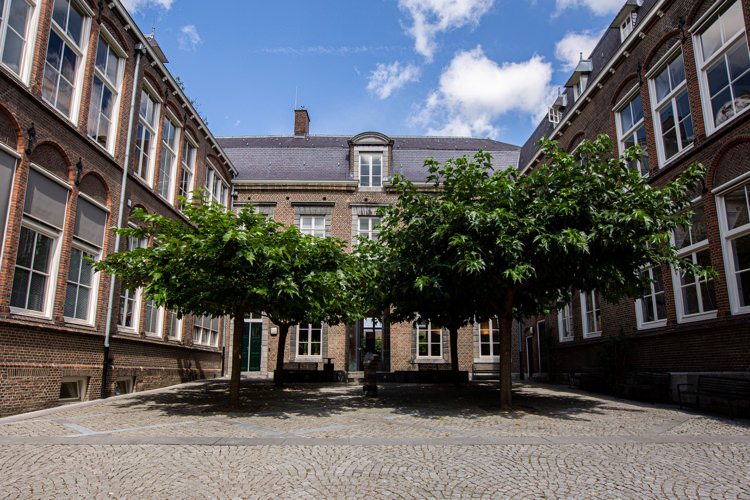When: April 10, 2024, 13:30-15:30
Where: Grote Gracht 90-92, D1.08, FASoS, Maastricht University
Registration: Workshop participation is free, but with an eye on refreshments, you are kindly invited to register by sending an email to Cindy van Montfoort before March 27.
About the workshop
The Journal for Artistic Research (JAR) publishes “artistic research expositions” on the Research Catalogue (RC), a digital platform. It has been around for more than a decade now. JAR’s editorial board defines artistic research expositions as submissions that develop “the knowledge implication… made tangible in the practice that is presented” in “artistically or intellectually” relevant ways (Schwab 2011). The format is intentionally open in character, and has been subject to extensive reflection (Schwab & Borgdorff 2014, Coumans et al. 2018). Yet what can we learn from actually doing it, working on it collaboratively, and from sharing experiences with doing so? This two-hour, in-person workshop is open to artists who have published in JAR and/or have worked with the RC, for those aspiring to do so, for those who supervise artistic research, and for anyone simply interested in the phenomenon of the artistic research exposition.
The workshop organizers are composer and artist Angela de Weijer (artist name Miss Milivolt) and historian of sound Karin Bijsterveld (Maastricht University). After a round of introductions, the workshop will start with an iterative analysis of award winning submissions to the Research Catalogue and with the organizers’ experiences with an artistic research exposition-in-the- making on Collective Signal: Swan Song for the Air Raid Siren. The workshop’s heart, however, is about inviting participants to share their experiences with or ideas for the format.
Prior to the workshop, on April 10, 12:00-13:00, De Weijer and Bijsterveld will present Collective Signal in the STS Work in Progress seminar, in the same room as the workshop. Workshop participants are welcome to attend that event as well.
About Collective Signal: Swan Song for the Air Raid Siren
Each first Monday of the month at noon, the 4,278 air raid sirens of the Dutch national Warning and Alarm System (WAS) sound in a routine test run. The test runs are checks on the sirens’ proper functioning, but also work as reminders to the Dutch population to recognize the sound and memorize how to act in case the siren signifies disasters or attacks.
This “sonic training,” as sound studies scholar Michael Bull has called the ways in which alarm-related sensibilities and routines are taught and acquired (Bull 2020, 44) might soon become obsolete. Since 2014, the Dutch government has been considering replacing the infrastructure of air raid sirens by a system of mobile phone alerts (NL-Alert). Recently, stand-up comedian Arjen Lubach (2023) presented a protest again this plan in his evening show, arguing for the siren sound’s creative preservation.
Years earlier, however, the news about the upcoming end of the air raid siren had already prompted artist Miss Milivolt (alias Angela de Weijer) to suggest composing a swan song for the sirens. The one-time artistic-memorial event, entitled Collective Signal, was to sound during the very last test run of the sirens. It would make use of the fact that the sirens today are no longer the electrically driven mechanical devices installed just prior to World War II, but are sound synthesizers that offer a range of potential sounds (Milivolt 2017).
Remarkably, the agency in charge of the sirens, the former Institute for Physical Safety (IFV), now Netherlands Institute for Public Safety (NIPV), responded positively to the idea. Apparently, it was not yet worrying about the publicity campaign that would likely have been necessary prior to such a unique and exciting nation-wide performance of a swan song by and for the sirens. De Weijer also involved historian of sound Karin Bijsterveld in order to learn more about the history of the air raid siren in the Netherlands.
The event, however, did not yet take place in its original form. Although the Ministry of Justice and Security is still intending have the sirens phase out, it keeps postponing the date on which the sirens will sound for the last time. In June 2023, Collective Signal did have its premier though, in Monheim-am-Rhein (Germany), in a reworked form, and for the twelve sirens of the alarm system in use there (Milivolt 2023). The artistic research exposition about this ongoing trajectory explores the networks of humans and things involved in the preparation for and materialization of Collective Signal and how this exploration helps to understand how the art work intervenes in, breaches and articulates composition, public safety and collective memory.
References
Bull, M. (2020). Sirens. Bloomsbury Academic.
Coumans, A., Sonderen, P., Benschop, R. & Strandvad, S.M. (2018). Dwell/Act/Transform: Drie perspectieven op een expo over artistiek onderzoek. FORUM+ 25(2), 56-63. DOI: https://doi.org/10.5117/FORUM2018.2.COUM
Lubach, A. (2023). Het luchtalarm. [You Tube Video]. September 4, 2023. https://www.youtube.com/watch?v=5eB33PpcwSk
Milivolt, M. (2017). Collective Signal. 2017. http://www.missmilivolt.com/work/collective-signal/
Milivolt, M. (2023). Collective Signal Rework. 2023. https://missmilivolt.com/collective-signal-rework
Schwab, M. (2011). Editorial. Journal for Artistic Research 1(1). https://www.jar-online.net/en/issues/
Schwab, M. & Borgdorff, H. (2014). The Exposition of Artistic Research: Publishing Art in Academia. Leiden University Press.





